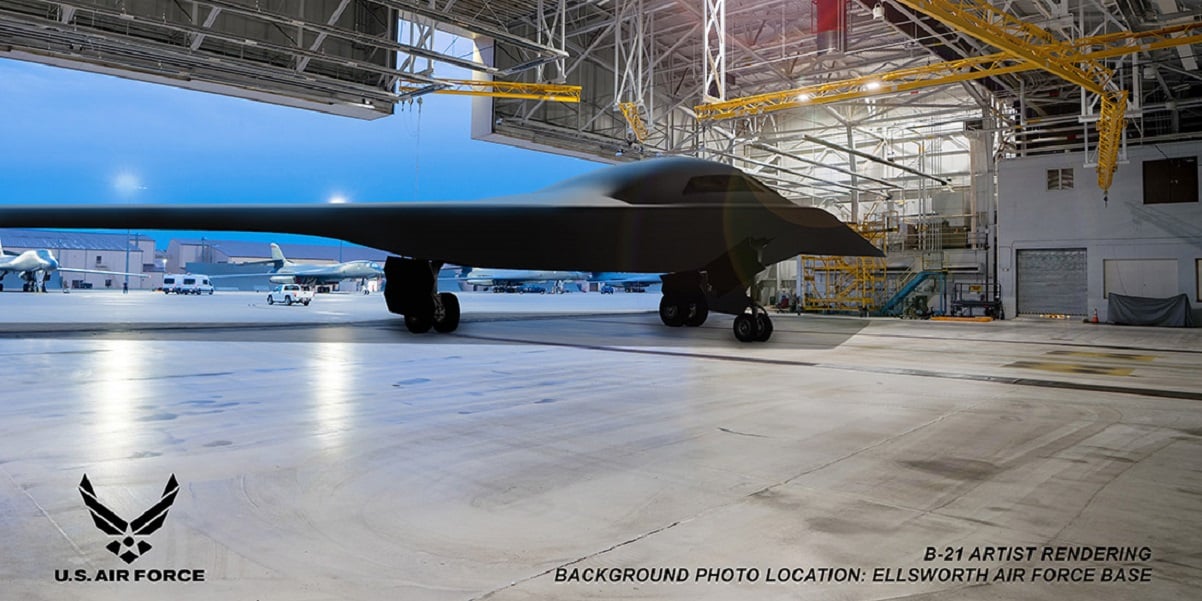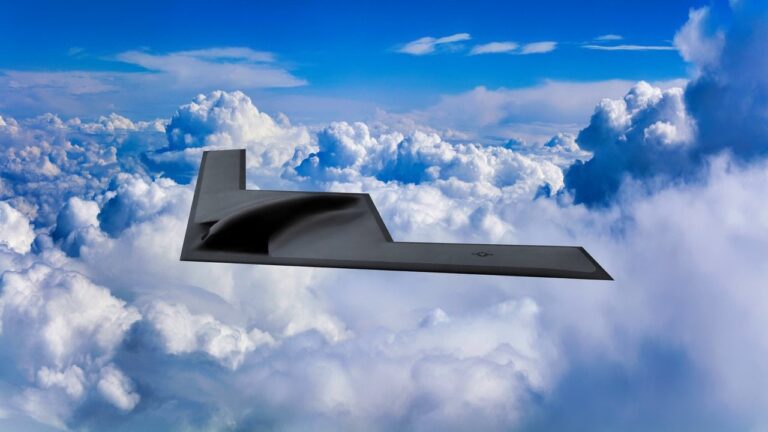Summary and key points to know: The U.S. Air Force faces major challenges as it develops its new long-range stealth bomber, the B-21 Raider, amid a looming fiscal crisis and budgetary constraints. The Air Force needs at least 300 B-21s to maintain an effective deep strike capability, but is scheduled to receive only 100 over the next decade.
– The B-21 has advanced stealth technology that could penetrate contested airspace, but budgetary constraints and the rise of drone warfare complicate the feasibility of doing so.
Augmenting the B-21 fighter fleet with next-generation drones could improve mission success and survivability, which is crucial amid rising tensions with China and Russia.
B-21 Raider: Essential Investment or Expensive Gamble?
The US Air Force is in deep trouble. It’s not the only branch of the US government facing serious problems. In fact, the entire country is on the brink of being torn apart by a crippling debt crisis as America’s enemies (and friends, such as Saudi Arabia) begin to move to phase out the petrodollar and eliminate the US dollar as the world’s primary reserve currency.
It’s likely the Pentagon doesn’t even realize how rigged its budget is.
But even without a looming debt crisis and subsequent financial restructuring, the military is struggling to deliver these systems as promised, despite paying top dollar for them.
One of the biggest problems facing the Air Force (and the other services individually) is how to develop a platform that can reliably penetrate contested airspace with near-peer rivals like China and Russia without being shot down.
Introducing the Air Force’s newest long-range stealth bomber, the B-21 Raider. This plane has it all. It’s equipped with cutting edge stealth technology. Unlike previous stealth planes, this plane has a completely improved composite skin that makes it even harder to spot on radar.
These planes are fast for bombers, and can drop a variety of powerful bombs on well-defended targets at great distances.
The B-21 Raider has some math problems
There’s just one small problem: The Air Force needs at least 300 fighter jets over the next few years to make this huge investment worthwhile; the Pentagon will likely receive at most 100 over the next decade. Still, many are rightly questioning whether investing in this system is the most efficient use of America’s limited (and soon-to-be dwindling) resources.
After all, as I have repeatedly argued, we live in an era of drone warfare that undermines most of the concepts of warfare that many of our leaders hold dear.
Still, the Air Force needs deep strike bomber capability. The service is already investing in these platforms. But if it can’t get the 300 needed to make this an effective investment, the service will have to spend significantly less on building a next-generation drone to operate in tandem with the B-21.
Additionally, the Air Force (along with the Army and other services) will need to marshal its limited resources to build both offensive hypersonic weapons systems and an effective defense against enemy hypersonic weapons.
But the idea that the B-21 is a waste of time or money is absurd. The B-21 is arguably the most advanced bomber in the world. If the U.S. were to commit to building at least 300 of these bombers as soon as possible, the rest of the world would be alarmed.
Failing that, equipping the small number of B-21s currently being built with advanced drones would not only enable the B-21 to penetrate sophisticated enemy air defenses, but also ensure mission success.
The same goes for surviving the mission.
But time is running out to solve all these problems. Soon we will be fighting China or Russia, whose advanced anti-access/area denial (A2/AD) and other air defense systems will ensure that most of the Air Force’s fleet cannot access conflict zones.

So stealth systems will be relied upon (though they will still be difficult to operate), but the state-of-the-art stealth technology on the B-21 could help overcome the threat posed to U.S. power-projection platforms.
The B-21 is a worthwhile investment. Pair it with a next generation drone and hear the enemy scream.
Author experience and expertise: Brandon J. Weichert
Brandon J. Weichert is a national security analyst at The National Interest, a former congressional staffer, and a geopolitical analyst. He has contributed to The Washington Times, Asia Times, and The Pipeline. His books include Winning Space: How America Remains a Superpower, Biohacked: China’s Race to Control Life, and The Shadow War: Iran’s Quest for Supremacy. His next book, A Disaster of Our Own Making: How the West Lost Ukraine, will be published by Encounter Books on October 22. Follow Weichert on Twitter. @WeTheBrandon.
All images are Creative Commons or Shutterstock.
From the safe
Russia panics: Why the US Navy is “decommissioning” Iowa-class battleships
Battleships vs. Battlecruisers: Iowa-class vs. Russian Kirov-class (Who Will Win?)


